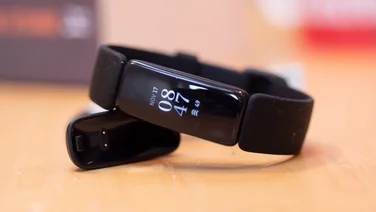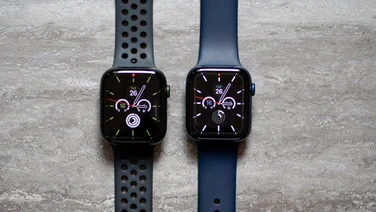To help us provide you with free impartial advice, we may earn a commission if you buy through links on our site. Learn more









Asus announced today at IFA that it’s launching a brand new wearable, the Vivowatch SP. Like its predecessor, which launched early last year, the new smartwatch boasts “medical-grade” heart rhythm and oxygen-level monitoring, among other features.
When used with Asus’ HealthConnect app, the Taiwan-based company claims the watch delivers all the data you need for 24/7 health and fitness monitoring. While I can’t testify to that until I’ve put it through its paces, I did have a few minutes of hands-on time with the Vivowatch SP in Berlin. What follows are my first impressions of the new fitness tracker.
Asus Vivowatch SP review: Key specifications, price and release date
- High-reflective LCD display
- Built-in GPS and altimeter
- Medical-grade ECG and PPG sensors
- Heart rate, pulse O2 level, autonomic nerve activity index (ANS age), stress level and blood pressure tracking
- Waterproof to 5ATM (50m)
- Up to 14-day battery life
- Price: TBC (approx $300)
- Release date: Q4 2019









Asus Vivowatch SP review: Design, key features and first impressions
The Asus Vivowatch BP was the world’s first wearable to offer “medical-grade” electrocardiogram (ECG) and photoplethysmogram (PPG) sensors, the former allowing it to analyse your heart rhythm and the latter used to measure blood oxygen saturation. With that in mind, its design made a certain amount of sense, because it looked somewhat more like a medical device than a lifestyle wearable. In other words, you wouldn’t want to be caught wearing it.
Its successor, the Vivowatch SP puts this right by using the type of round-sports-watch design that’s so prevalent that it could easily be mistaken at a glance for a device from Garmin, Polar or Suunto, to name just a few. And that makes a lot of sense because those are exactly the brands Asus should be competing with.
Based on Asus’ keynote at IFA, the watch is aimed squarely at fitness enthusiasts who want a device that goes well beyond the norm of step and heart-rate tracking. Among the other metrics it can track are stress, blood-oxygen saturation, blood pressure, and autonomic nerve activity index (ANS age), a measurement an Asus rep told is essentially your fitness age. There’s also GPS activity tracking, as you’d expect to find on any sports watch worth its weight – and let’s not forget it can also perform an ECG from your wrist.
Rather bizarrely, the Vivowatch SP can use one of two sets of sensors to measure the aforementioned data, because it has sensors on the reverse of the casing as well as the side of the watch. Until we’ve tested the watch, it’s difficult to know how this data will be used or indeed how usefully it’ll be presented in the Asus HealthConnect app but, on paper, it’s certainly an impressive feature set. Sadly, however, things aren’t quite so impressive when it comes to the watch’s build quality.
In the short time I had with the Vivowatch SP, I thought it felt fairly cheap and plasticky for a watch that’s expected to cost around $300. In particular, the display was rather underwhelming, with a backlight so dull that it was difficult to read even in indoor light. An Asus rep told us the devices were pre-production models, but even still I’d expect much more with only a few months from launch.
Asus Vivowatch SP review: Early verdict
Despite this, the Asus Vivowatch SP has the potential to be a standout smartwatch if it can deliver its health insights in a useful and easily digestible manner. Having ECG, blood pressure, stress and blood-oxygen tracking on your wrist is all well and good, but you’ve got to know what to do with it.
Without the right implementation, the Asus Vivowatch SP risks being just another GPS watch, and an overpriced one at that. We’ll know for sure when we have a chance to test it.





